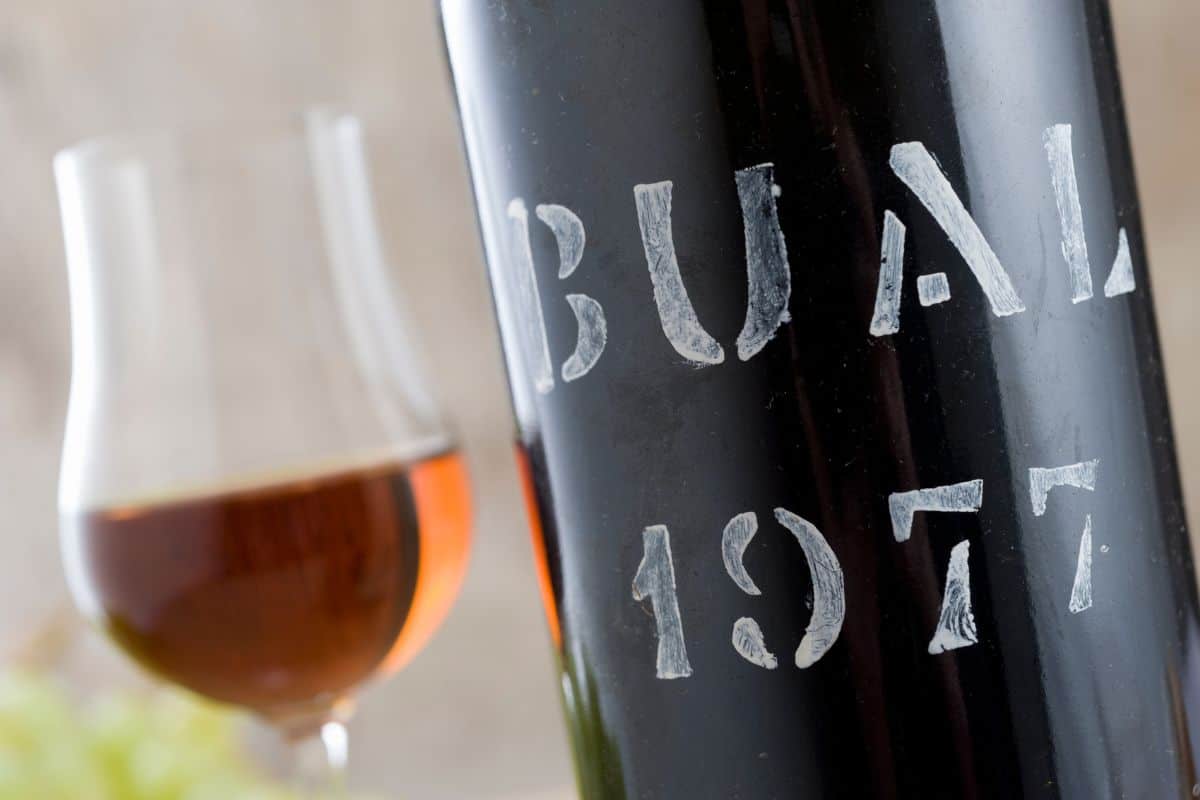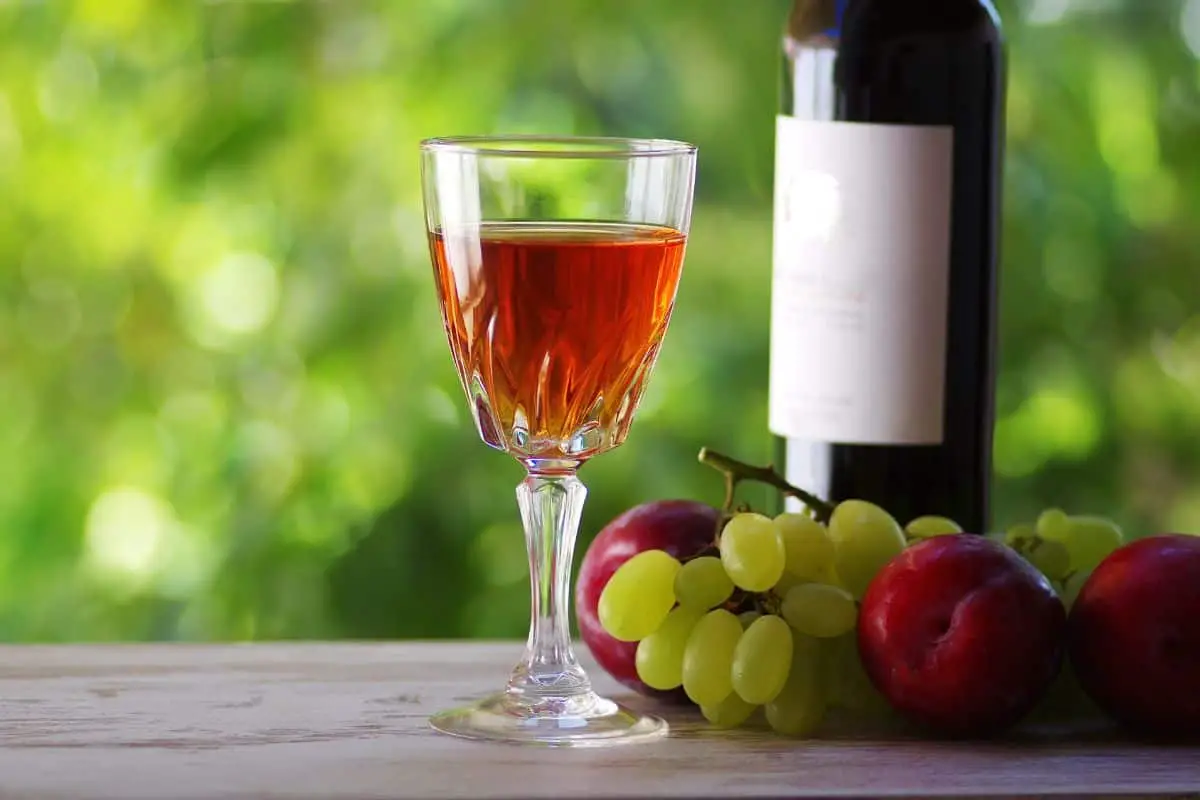On its named Portuguese island, Madeira produces an intriguing and much underrated fortified wine.
A fortified wine known as Madeira is made on the same-named island, which is located more than 400 kilometres north of the famous Canary Islands and more than 500 kilometres west of Morocco.

A balanced grape spirit is added to the wine to stop the fermentation process and increase the amount of residual sugar.
As a result, if fortified very early in the process, it can be rather sweet.
The fact that Madeira wine is heated throughout the ageing process is another distinguishing quality of the beverage.
When you learn about its history below, you’ll understand why.
Madeira’s distinctive blend of oxidative ageing, gentle pasteurisation, and high sugar content makes it a robust and durable wine overall.
You will discover the fundamentals of Madeira in this introduction, including its background, flavour profile, and serving instructions.
The History Of Madeira Wine
Madeira was formally found around 1419 throughout the Age of Exploration, while there has been both supposition and evidence that the Romans and Vikings visited.
After two captains had taken refuge on an island during a storm the prior year, a Portuguese expedition made its way to the region to claim the island.
But when they spotted black clouds hanging over it from a distance, they soon found a larger adjacent island.
Between 1420 and 1425, the uninhabited island was colonised by the Portuguese. It quickly became essential for producing sugar, and by 1490, its output had surpassed Cyprus’.
The island’s wine business didn’t become well-known until the 16th century, despite the fact that vines were planted there when it was first populated.
Madeira quickly developed into a significant halting point and trading hub. Ships sailing to both India as well as the West Indies could conveniently stop for supplies owing to its geographic location.
Wine from Madeira was at first unfortified. As a result, it was typically consumed by locals and tourists who were sailors because it would quickly rot when conveyed.
Lamego’s producers began producing fortified port wine not long after English traders did.
The wine was initially fortified using locally produced sugar cane spirit rather than grape spirit, as was the case with port and as is now standard for Madeira.
As a result of this innovative method, Madeira wine was now able to be transported without going bad, which considerably increased demand.
Trade ships would buy it so they could feed their crews and trade it when they got to their destinations.
Madeira rapidly engaged in direct competition with port, sherry, and cognac, and it was especially popular in the UK, Europe, and even Russia.
Merchants profited from high import tax rates within Great Britain because Madeira had been a Portuguese province.
Additionally, it frequently travelled to the US and was offered for sale there frequently.
Another frequent customer was the East India Company, which frequently ordered hundreds of 470 litre butts or “pipas” for its travels to India.
By the 18th century, Portugal had shifted a large portion of its production of sugar to its colonies in Latin America and the Caribbean.
As a result, the island’s wine became its main export.
Then, trading ships would call at the island particularly because of its wine and therefore would place larger orders, ushering in a new age for Madeira.
What Does Madeira Wine Taste Like?

Madeira wine comes in a variety of styles, ageing methods, and grape varietals.
Since Madeira wine is sometimes fortified throughout fermentation to preserve some residual sugar, it is typically sweet.
Even the driest wine is often considered to be sweet, although some can be especially syrupy.
The grape types used in Madeira were chosen expressly for their high levels of natural acidity, so they are not overly sweet.
A balanced palate is the result of the sweetness and acidity working together. Younger Madeira mixes typically have flavours of candied fruit, caramel, and almonds.
Madeira will become more pronounced in its dried fruit aromas and take on an overall nuttier profile as it ages.
Older Madeira in particular may include sweet scents of toffee, hazelnuts, and coffee.
How Do You Drink Madeira Wine?
First off, depending on its sweetness, Madeira wine is better served cold at various serving temperatures.
Sherry that is drier is typically served around 12°C (53.6°F), whereas sweeter varieties can be gently warmed up to 16°C (60.8°F).
Similar to how sweeter Madeira wines go amazingly with seafood, soup, appetisers, and cheese, drier Madeira wines are frequently served as an apéritif.
Stronger Madeira wine is frequently served as a digestif or a dessert wine.
How Do You Cook With Madeira Wine?
Madeira is a well-known component in cooking, as was previously mentioned.
While being associated with this reputation for much of the 20th century might well have seemed more like a punishment, it is now a source of pride.
Its deep and nuanced flavour profile can add richness to a number of recipes. When cooking gravy for a Sunday dinner, it’s a great flavour enhancer.
While doing so, it deliciously deglazes items that have been sautéed, including everything from grilled meat to veggies.
For cooking, mixed Madeira wines are preferable to vintage expressions, which can be pricey and offer few extra benefits.
In a similar vein, you can decide on the grape variety and sweetness level based on the flavours you want to infuse into the dish.
Most of the time, it provides subtle nutty aromas and a tinge of toffee.
Naturally, any positive health benefits of Madeira are best enjoyed in moderation. After all, consuming too much alcohol, regardless of the type, is harmful.
The first point to keep in mind is that sweeter Madeira wine has a significant residual sugar content. As a result, it can be very fatty.
To be fair, drier Madeira varieties experience less of this problem.
Large levels of polyphenols are also present in Madeira wines created from the most heavily macerated grapes.
Final Thoughts
Madeira, a fortified wine, comes in a variety of dry and sweet varieties. It takes its title from the small but stunning island of Madeira.
Because the wine is heated repeatedly, Madeira has a distinctive flavour. Wine with intriguing flavours of roasted almonds, cooked fruit, toffee, and caramel are produced by heating.
Hopefully you have enjoyed learning about the history and uses of Madeira wine, and consider using it to enhance your cooking, as well as the next time you feel like a delicious glass of wine.
- How to Learn Wine Tasting: Essentials for Beginners - March 10, 2024
- How to Learn to Like Wine: Cultivating an Appreciation for the Vintner’s Art - March 10, 2024
- Thanksgiving Sangria: A Flavorful Twist to Your Holiday Table - August 27, 2023








